Charleston Water Quality at a Glance
some concerns
Is Charleston Water Safe to Drink?
Generally Yes – Charleston Water System meets most federal standards and has won awards for water quality. However, PFAS levels currently exceed new EPA limits with PFOS at 5.7 ppt and PFOA at 4.4 ppt. Additional concerns include chromium-6 and disinfection byproducts. The system is working toward compliance by 2029.
⚠️ Key Concerns for Charleston Residents
- PFAS “Forever Chemicals”: Current levels exceed new EPA maximum contaminant levels (5.7 ppt PFOS, 4.4 ppt PFOA)
- Environmental Impact: High PFAS contamination found in local marine life and groundwater near Joint Base Charleston
- Chromium-6: Cancer-causing hexavalent chromium detected above health guidelines
- Disinfection Byproducts: Chloroform and bromodichloromethane from water treatment process
Read the full report below for detailed analysis, city-specific data, and actionable recommendations for Charleston residents.
Charleston – South Carolina – Water Quality Report 2025: PFAS Testing, Infrastructure Concerns & Safety across your city
Charleston Water System (CWS) serves approximately 500,000 residents across the Charleston metropolitan area, including portions of Berkeley, Dorchester, and Charleston counties. The utility manages over 1,758 miles of water mains, one major drinking water treatment plant (Hanahan Water Treatment Plant with 118 MGD capacity), and multiple pumping stations, delivering an average of 55 million gallons daily to this historic coastal city.
Charleston draws its drinking water primarily from the Bushy Park Reservoir in Berkeley County (approximately 80% of supply) and the Edisto River in Dorchester County (approximately 20% of supply). As a coastal city at sea level, Charleston faces unique water challenges including saltwater intrusion, tidal influences, and increasing flood events. The city has invested significantly in water system resilience, implementing over $250 million in infrastructure improvements over the past decade. Charleston’s water management approach balances historical preservation considerations with infrastructure modernization, water quality protection, and comprehensive climate adaptation planning for this vulnerable coastal community.
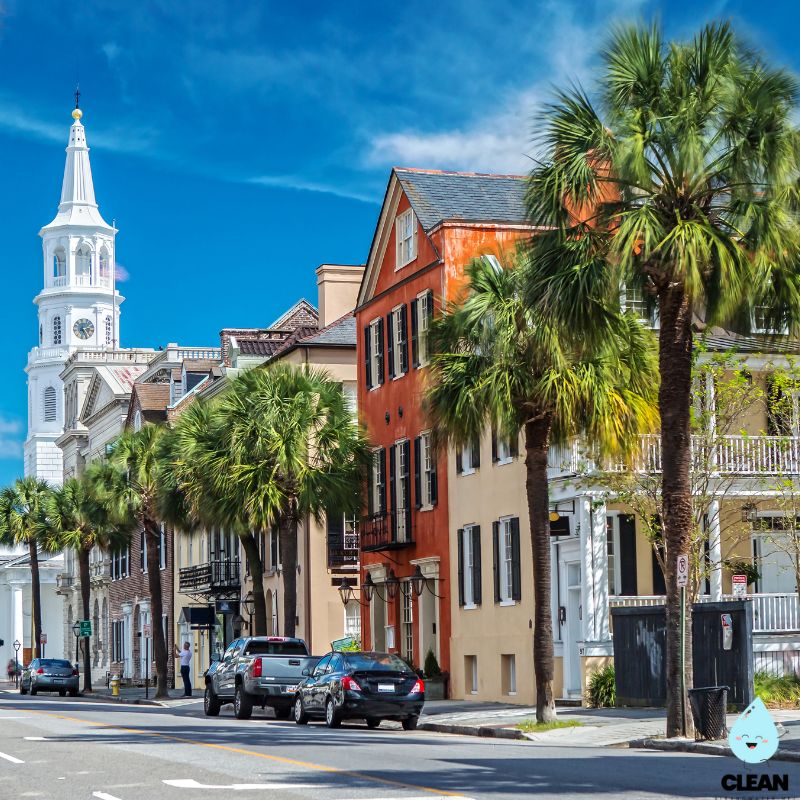
Charleston Water Quality: Current Status (2024-2025)
Latest Testing Results
- PFAS Levels: Recent testing from March 2025 shows PFOS at 5.7 parts per trillion (ppt) and PFOA at 4.4 ppt, both exceeding EPA’s new maximum contaminant levels of 4.0 ppt. The system is working toward compliance by 2029.
- Lead Levels: The most recent testing period showed 90th percentile lead levels well below the EPA action level of 15 ppb, reflecting effective corrosion control and targeted infrastructure replacement efforts.
- Testing Scope: Charleston Water System conducts comprehensive water quality testing, including enhanced monitoring in historical districts with older infrastructure and comprehensive source water surveillance.
- Compliance Status: Charleston’s water meets most federal and state drinking water standards, with current work underway to address PFAS compliance requirements by the EPA deadline.
Diverse Water Supply
- Bushy Park Reservoir: Primary source (approximately 80% of supply) located in Berkeley County, providing a consistent, protected water source despite seasonal variations in water quality.
- Edisto River: Secondary source (approximately 20% of supply) that provides additional capacity during peak demand periods and drought conditions.
- Watershed Protection: Comprehensive source water protection programs including land conservation efforts, buffer zone preservation, and watershed monitoring in collaboration with neighboring jurisdictions and conservation groups.
Treatment Excellence
- Advanced Filtration: The Hanahan Water Treatment Plant employs multi-stage treatment processes including conventional sedimentation, granular activated carbon filtration, and enhanced disinfection systems.
- Disinfection System: Utilizes chloramine as a secondary disinfectant, providing longer-lasting protection while reducing disinfection byproduct formation compared to free chlorine.
- Corrosion Control: Optimized pH adjustment and orthophosphate addition prevents leaching of lead and copper from pipes, with treatment parameters continuously monitored and adjusted based on extensive water chemistry data.
Infrastructure Adaptation
- Capital Improvement Program: Over $250 million invested in water system upgrades since 2010, addressing aging infrastructure, saltwater intrusion prevention, and system resilience in the face of increasing flood events.
- Lead Service Line Inventory: Charleston Water System has sent notifications to 70,000 customers about potential lead service lines and is working toward EPA’s 2037 replacement deadline.
- Historic District Considerations: Specialized pipe replacement programs that balance preservation of historic streetscapes with critical infrastructure needs, using trenchless technology where appropriate.
- Smart Water Technology: Deployment of advanced metering infrastructure, pressure monitoring systems, and real-time water quality sensors to optimize system performance and rapidly identify potential issues.
Climate Resilience Planning
Charleston has developed a forward-thinking climate adaptation strategy specifically addressing the unique challenges facing a low-elevation coastal city. The “Charleston City Plan” and “Sea Level Rise Strategy” include water system hardening measures, flood-resistant infrastructure design, and emergency response protocols for major storm events. CWS has elevated critical water infrastructure components above projected flood levels and implemented backup power systems at key facilities. The utility is also investigating alternative water sources and advanced treatment technologies to address increasing saltwater intrusion concerns as sea levels rise. Charleston’s comprehensive planning approach recognizes the interconnected nature of stormwater management, drinking water protection, and wastewater services in a changing coastal environment.
Recommendations for Charleston Residents
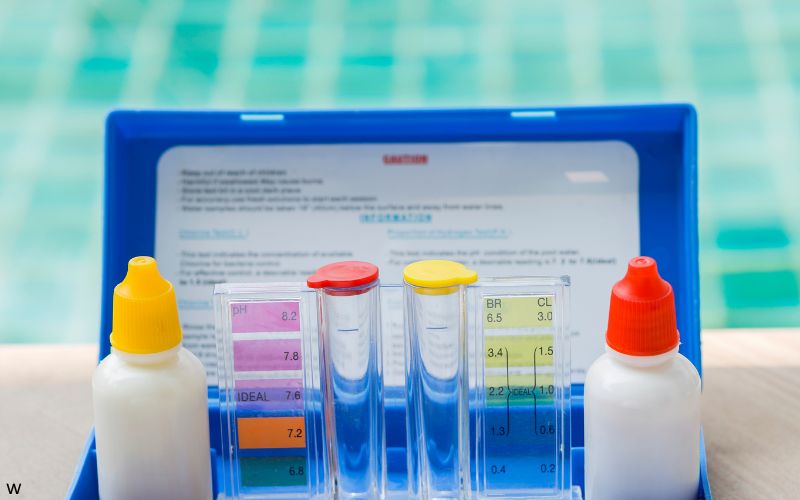
Schedule Water Testing
Request free water quality testing through Charleston Water System by calling (843) 727-6800. Testing is particularly important for homes in the historic districts or buildings constructed before 1986 that may have older plumbing materials, especially given current PFAS levels above EPA limits.
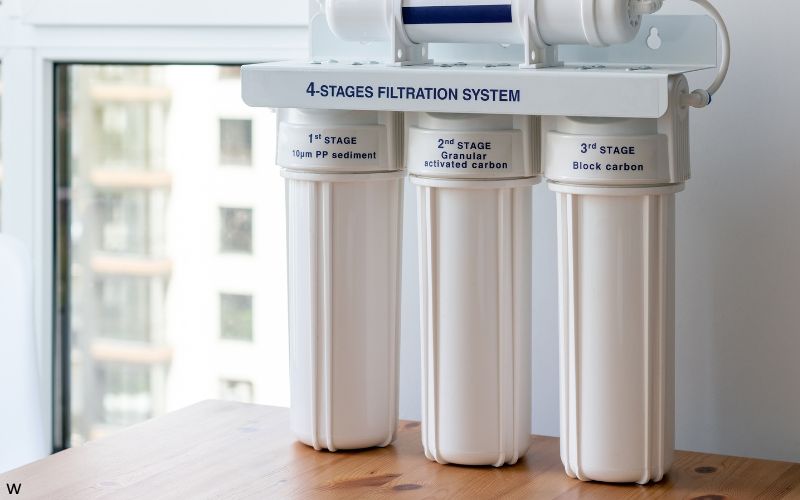
Consider Water Filters
Given current PFAS levels exceeding EPA limits, consider using NSF-certified filters (Standard 53 for lead, Standard P473 for PFAS) for drinking and cooking water. This is especially recommended for homes in the historic peninsula area or buildings constructed before 1986.
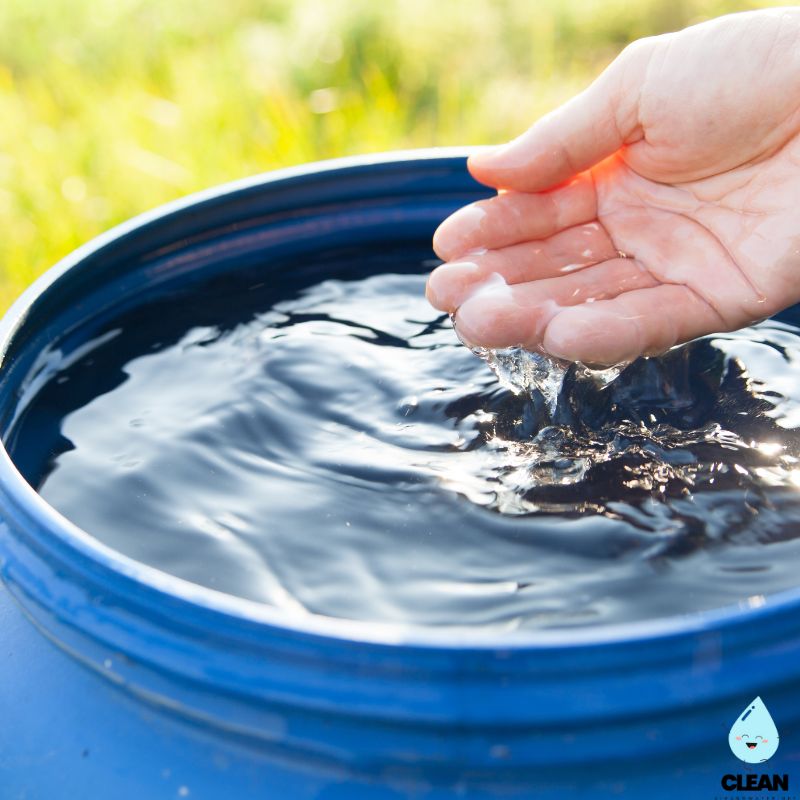
Implement Flood Protection
Given Charleston’s vulnerability to flooding, protect your home’s water systems by installing backflow prevention devices on plumbing fixtures and considering flood-resistant materials for basement or first-floor plumbing. Charleston Water System offers guidance for qualifying backflow prevention installations.

Flush After Prolonged Absences
If your home has been vacant for more than a week, run cold water taps for 3-5 minutes before using water for drinking or cooking. This is particularly important in Charleston’s historic homes with older plumbing systems, as water that sits in pipes can absorb trace metals over time.
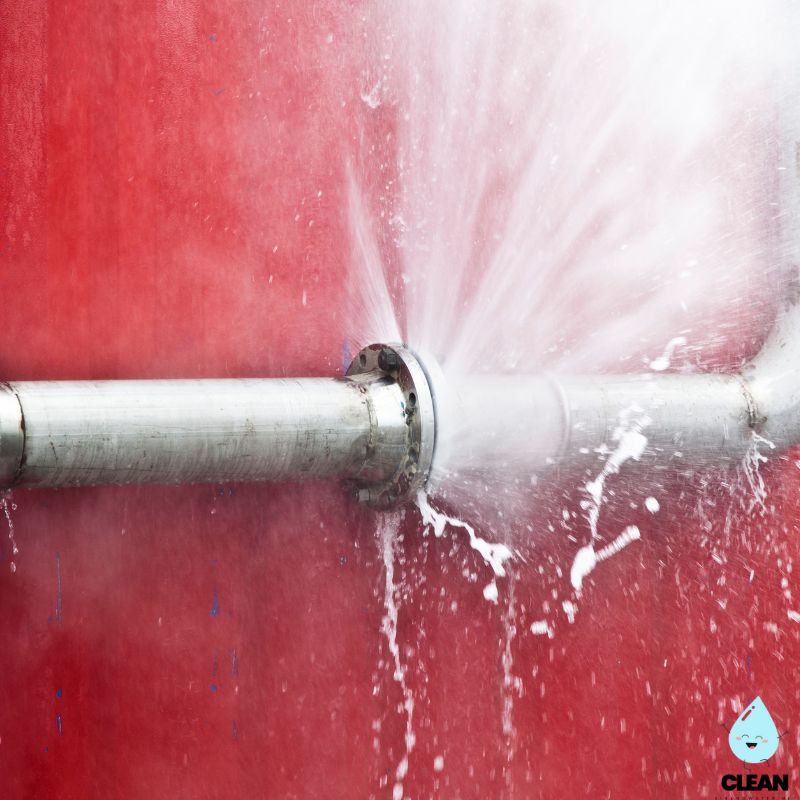
Report Flooding Issues
Report water main breaks, unusual water quality, or flood-related concerns immediately to Charleston Water System at (843) 727-6800. During king tides or storm events, prompt reporting helps the utility prioritize emergency response and protect water quality.
Quality News About Your Water
Get the comprehensive water quality news coverage you need with our dedicated US Water News Service. From coast to coast, we deliver in-depth reporting and expert analysis on PFAS contamination, EPA regulatory changes, infrastructure developments, and emerging water safety issues affecting communities nationwide. While mainstream media only covers the biggest stories, we provide the detailed, ongoing coverage that helps you understand the full scope of America’s water challenges. Whether you’re a concerned citizen, water professional, or community leader, our daily updates and analytical insights keep you informed about the issues that matter most to public health and environmental safety.
Frequently Asked Questions
Is Charleston’s tap water safe to drink?
Charleston’s tap water meets most federal and state drinking water standards and is generally safe to drink. However, current PFAS levels (PFOS at 5.7 ppt and PFOA at 4.4 ppt) exceed EPA’s new maximum contaminant levels of 4.0 ppt. The Charleston Water System is working toward compliance by 2029.
The Hanahan Water Treatment Plant employs multiple treatment barriers including coagulation, sedimentation, filtration through granular activated carbon, and disinfection with chloramines. Charleston Water System conducts comprehensive water quality testing and monitoring for regulated and unregulated contaminants.
During certain times of year, especially summer months, you may notice occasional taste and odor changes due to naturally occurring algae in our source waters. While aesthetically noticeable, these compounds are effectively removed through our treatment process and pose no health concern. Given current PFAS levels, residents may want to consider certified filters as an additional precaution, particularly for drinking and cooking water.
How does flooding affect Charleston’s water quality?
Charleston’s unique coastal location makes flooding a frequent concern, but several protective measures ensure water quality remains consistent:
• Protected Source Water: Our primary water source, Bushy Park Reservoir, is located inland and less vulnerable to coastal flooding and saltwater intrusion
• Elevated Infrastructure: Critical water treatment and pumping facilities have been elevated above projected flood levels and equipped with backup power systems
• Monitoring Systems: Enhanced water quality monitoring during and after flood events ensures early detection of any potential issues
• Distribution System Protection: Pressure maintenance throughout the system prevents contamination from entering water mains even during flood conditions
During major flood events, Charleston Water System implements additional water quality testing and may temporarily increase disinfectant levels as a precautionary measure. Customers rarely experience water quality impacts, even during significant flooding.
What improvements has Charleston made to its water system?
Over the past decade, Charleston Water System has invested over $250 million in water system improvements:
• Treatment Plant Optimization: Enhanced the Hanahan Water Treatment Plant with state-of-the-art filtration technology and monitoring systems
• Lead Service Line Program: Comprehensive inventory and notification program for 70,000 customers with potential lead service lines, working toward EPA’s 2037 replacement deadline
• Historic District Infrastructure: Specialized replacement programs for water mains in the historic peninsula, using minimally invasive techniques
• Flood Resilience: Elevated pumping stations, installed flood barriers, and implemented backup power systems at critical facilities
• Smart Water Network: Deployed advanced metering infrastructure and pressure monitoring systems to detect leaks and optimize operations
• Source Water Protection: Partnered with conservation organizations to protect and enhance watershed areas surrounding water sources
These investments have significantly improved system reliability, particularly during extreme weather events, and ensure Charleston’s ability to provide high-quality water despite increasing climate challenges.
How is Charleston addressing saltwater intrusion concerns?
As a coastal community with rising sea levels, Charleston has implemented a multi-faceted approach to address saltwater intrusion:
• Source Water Diversification: Maintaining multiple water sources with primary reliance on the inland Bushy Park Reservoir
• Advanced Monitoring: Conductivity sensors throughout the distribution system provide early detection of potential saltwater infiltration
• Treatment Process Adaptations: Enhanced treatment capabilities that can address varying levels of salinity in source waters
• Infrastructure Hardening: Strategic valve placement and distribution system modifications to isolate vulnerable coastal areas if necessary
• Research Partnerships: Collaboration with regional universities and agencies to model future saltwater intrusion scenarios and develop mitigation strategies
To date, Charleston’s drinking water sources have not experienced significant saltwater intrusion impacts, but the utility continues to develop long-term strategies to address this potential challenge as sea levels rise.
Contaminants of Concern
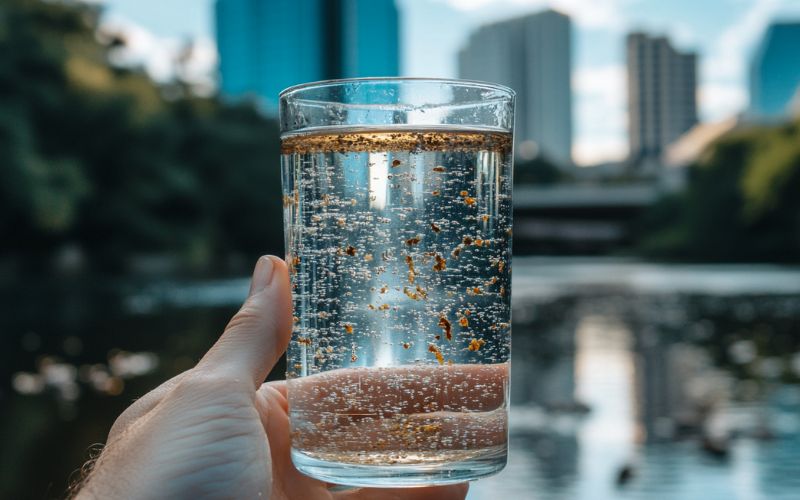
PFAS Compounds
Source: Industrial processes, firefighting foams, and consumer products that may contaminate source waters, particularly significant in Charleston area with high levels found in local marine life and groundwater near Joint Base Charleston
Health Effects: Potential links to increased cholesterol levels, changes in liver enzymes, small decreases in infant birth weights, and increased risk of certain cancers with long-term exposure to high levels
Current Status: Charleston Water System testing shows PFOS at 5.7 ppt and PFOA at 4.4 ppt (March 2025), both exceeding EPA’s maximum contaminant levels of 4.0 ppt. The utility is implementing treatment upgrades to achieve compliance by 2029.
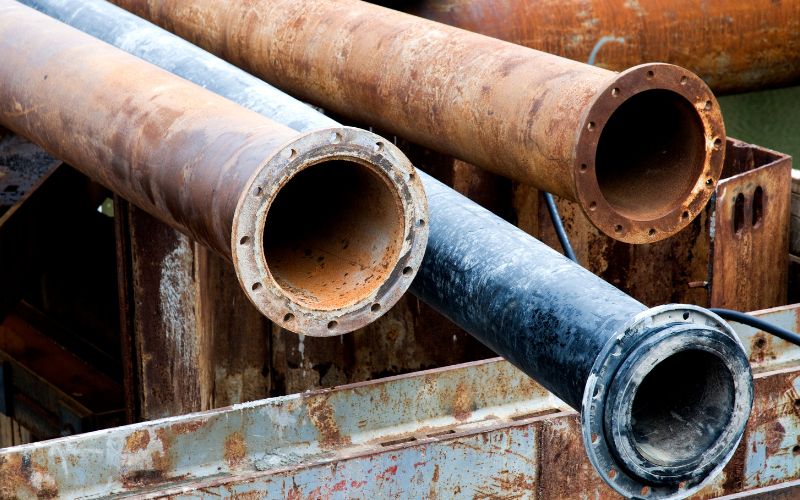
Lead
Source: Lead service lines and plumbing materials in homes built before 1986, particularly in Charleston’s historic districts; Charleston Water System has identified and notified 70,000 customers with potential lead service connections
Health Effects: Developmental delays in children, reduced IQ, learning difficulties, kidney problems, and cardiovascular effects in adults
Current Levels: Recent testing shows 90th percentile values well below EPA action level of 15 ppb due to effective corrosion control EPA Limit: Action level 15 ppb, but no level of lead is considered safe

Chromium-6 (Hexavalent Chromium)
Source: Industrial pollution or natural occurrences in mineral deposits and groundwater; can enter drinking water through contaminated source waters or corrosion of chrome-plated plumbing fixtures
Health Effects: Classified as a probable human carcinogen by the California Office of Environmental Health Hazard Assessment; potential increased cancer risk with long-term exposure
Current Status: Third-party testing has found levels exceeding health guidelines in Charleston’s water supply, though specific recent levels have not been publicly disclosed by the utility
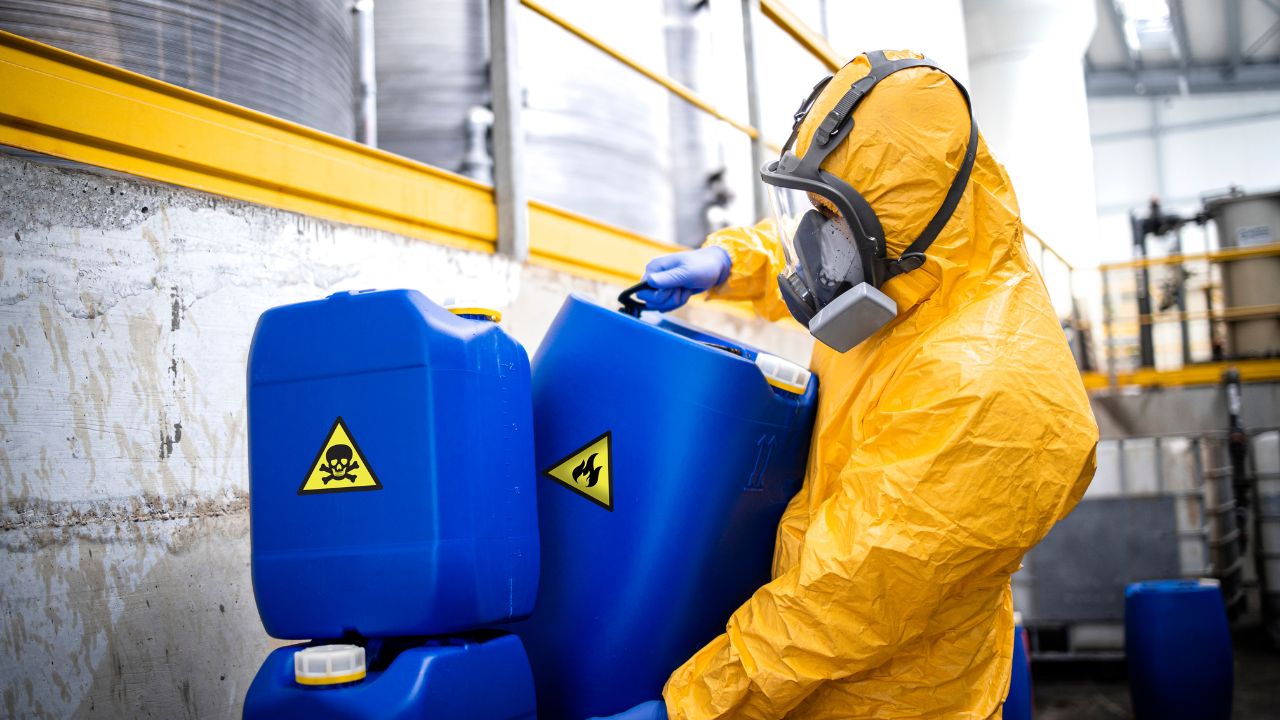
Disinfection Byproducts
Source: Formed when chlorine or other disinfectants used to treat drinking water react with naturally occurring organic matter in source water; includes trihalomethanes (THMs) like chloroform and bromodichloromethane
Health Effects: Long-term exposure to high levels may increase cancer risk and cause problems during pregnancy; chloroform is classified as a probable human carcinogen
Current Status: Charleston Water System uses chloramines as secondary disinfectant to reduce byproduct formation; levels are monitored regularly and meet current EPA standards, though some exceed stricter health guidelines
Please read – our information
The information presented on cleanairandwater.net is compiled from official water quality reports, trusted news sources, government websites, and public health resources. While we strive for accuracy and thoroughness in our presentations, we are not scientists, engineers, or qualified water quality professionals.
Our mission is to present water quality information in an accessible, real-world format that helps people understand what’s in their water and make informed decisions about their health and safety. We believe that complex environmental information should be available to everyone in a format that’s easy to understand.
We make every effort to ensure our content is current and accurate, but we cannot guarantee that all information is complete or error-free. This website should not replace official communications from your local water utility or health department. We always recommend consulting official sources for the most up-to-date information regarding your specific water system.
Clean Air and Water is not liable for any unintentional errors, omissions, or outdated information. The content on this site is provided for informational purposes only and should not be considered professional advice.


